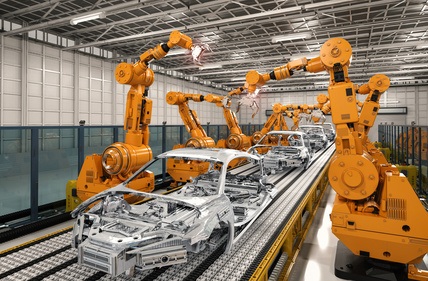Oxford Economics: Robots are here and they are after your job
by June 30, 2019 9:58 am 1,572 views

Although robots and artificial intelligence (AI) technologies have boosted global productivity and economic growth, more than 2,030 manufacturing jobs now performed by humans will be lost to innovation in the coming decade, according to a new report released Wednesday (June 26) by United Kingdom’s Oxford Economics.
In a 64-page report entitled “How Robots Change the World,” Oxford CEO and Chief Economist Adrian Cooper said the robotics revolution is rapidly accelerating, as fast-paced technological advances in automation, engineering, energy storage, artificial intelligence, and machine learning converge. The result, Cooper concludes, will transform the capabilities of robots and their ability to take over tasks once carried out by humans.
According to data from the eye-raising report, the number of robots in use worldwide multiplied three-fold over the past two decades, to 2.25 million. Trends suggest the global stock of robots will multiply even faster in the next 20 years, reaching as many as 20 million by 2030, with 14 million in China alone.
“The implications are immense, and the emerging challenges for governments and policymakers are equally daunting in their scale,” said Cooper in the report’s foreword.
Cooper continued: “The rise of the robots will boost productivity and economic growth. It will lead, too, to the creation of new jobs in yet-to-exist industries, in a process of ‘creative destruction.’ But existing business models across many sectors will be seriously disrupted. And tens of millions of existing jobs will be lost, with human workers displaced by robots at an increasing rate as robots become steadily more sophisticated.”
For both people and businesses, Cooper said the effects of these job losses will vary greatly across countries and regions, with a disproportionate toll on lower-skilled workers and on poorer local economies. In many places, the impact will aggravate social and economic stresses from unemployment and income inequality in times when increasing political polarization is already a worrying trend.
As noted, every third robot worldwide is now installed in China, which accounts for around one-fifth of the world’s total stock of robots — up from just 0.1% in 2000, the report states. In 2017, China expanded its lead as the world’s largest market for industrial robots, accounting for 36% of global sales, up from 30% in 2016.
If this trajectory of investment continues, robots in use in China by 2030 will dwarf the rest of the world’s stock of industrial androids as it reinforces its position as the world’s primary manufacturing hub. By contrast, though it has grown by around 370,000 units since 2000, the combined robot inventory of the U.S. and Europe has fallen to under 40% of the global share from its peak of close to 50% in 2009.
In Japan, formerly the world leader in automation, the active stock of robots has been reduced by around 100,000 units since the start of the millennium, in line with a rebalancing of its economy away from manufacturing and the migration of many production facilities offshore, especially to China.
Closer to home, the report notes that the most defenseless states to the robot revolution in the U.S. are Oregon, Louisiana, Texas, Indiana and North Carolina. Those “high vulnerability” states are generally associated with steel-making and heavy industry.
On the other hand, most New England states have low vulnerability to the future spread of manufacturing robots, as well as those with a higher reliance on tourism such as Florida, Nevada and Hawaii. Arkansas is listed as a “lower-medium” risk due to the state’s robust tourism sector and fast-growing service sector.
SERVICE SECTOR BOTS ON THE WAY
Although the report highlights how the rise of industrial robots has already reduced manufacturing employment significantly in advanced economies around the world, those blue collars jobs only account for a minor share of total employment in these countries. Instead, according to the latest Oxford estimates, most people work in the sprawling service sector— around three-quarters of all workers.
To date, the adoption rate for physical robots across service industries has been slow for many reasons, which doesn’t count software-only bots and applications that have already gained wide acceptance in powering process automation, the report states. For one, the underlying return on large capital investments can be harder to justify in environments without significant scale. Also, many aspects of service work can prove difficult to automate.
“However, innovations in artificial intelligence, machine learning, and computing power suggest a significant acceleration is coming, particularly in the category of logistics systems—led in part by the global expansion of Amazon and other multinational e-commerce companies,” the report states.
To complete the study, Oxford said it brought together a team of economists, econometricians, modelers and technology experts from across its worldwide network of over 250 analysts to conduct an extensive research study to analyze the robotics phenomenon.
